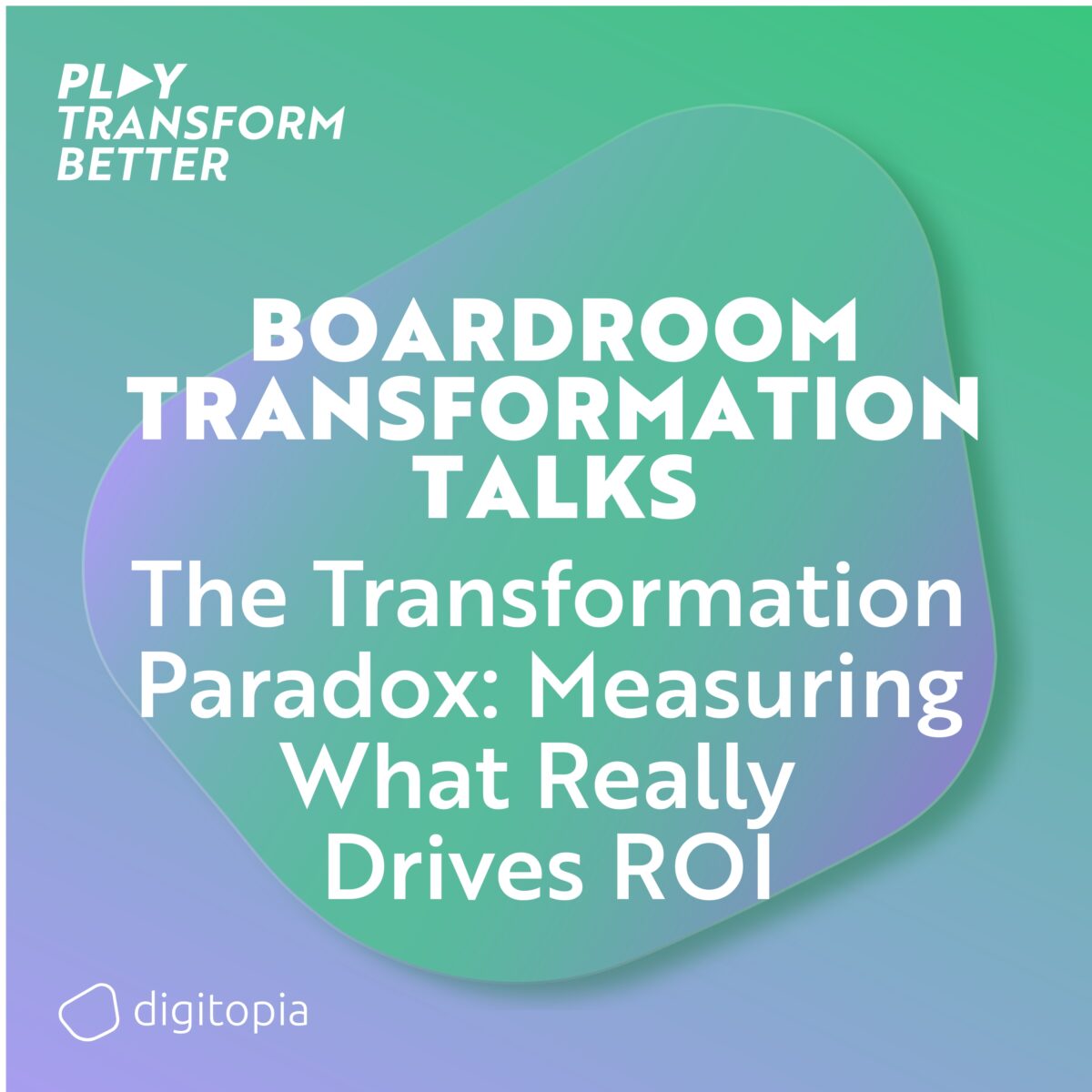
Listen on
Episode Description
Welcome to the Deep Dive — the show that tears through complex topics to reveal the insights you actually need.
Today, we’re tackling one of the biggest budget black holes in modern business: enterprise transformation.
Companies everywhere are spending fortunes on modernising tech, embedding AI, and redesigning customer experiences. But they often fail to connect all that effort to the results that matter — real business outcomes.
This is what we call The Transformation Paradox.
Leaders pour millions, even billions, into digital initiatives. But when they face the board, they talk about internal capability improvements — not tangible results. They’re measuring activity, not impact.
Transformation isn’t optional anymore. It’s about survival. Yet if you can’t connect a new maturity score to financial performance or customer satisfaction, it becomes a sunk cost — not a growth engine.
Learning to Read the Hidden Metrics
Think of your organisation as a race car.
Your financial KPIs — revenue, margins — are your lap times. Everyone sees those.
But your transformation maturity score? That’s the hidden telemetry: tyre pressure, fuel mix, engine mapping.
Understanding those hidden metrics is what separates performance from potential.
Transformation measurement is about learning to read those signals — knowing which internal levers to pull to guarantee faster lap times.
Why Measurement Matters
Transformation efforts chase familiar goals: competitiveness, efficiency, customer satisfaction, innovation, talent retention, future readiness.
All of them are business outcomes. Yet too many projects begin without measurable links between actions and results. The outcome?
Focus fades. Teams lose direction. Investment impact gets diluted.
Without measurement, transformation becomes a cost centre — not a growth engine.
When you measure consistently across dimensions like strategy, tech, operations, culture, and customer experience, patterns emerge.
You start seeing which internal improvements drive performance.
You shift from anecdotal progress to evidence-based impact.
Every Gap Is a Goldmine
Each maturity gap isn’t just a weakness — it’s untapped value.
Think of it as a dark asset: potential waiting to be realised.
Effective measurement reveals a causal chain:
Maturity → Capability → Outcome
Connecting the Chain
Maturity Level:
Your current ability in a specific area.
Example: Data management at 2.6 out of 5. That means reactive decisions, backward-looking analysis.
Capability Enhancement:
The specific improvement you make — integrating platforms, upskilling teams, automating processes.
Business Outcome:
The measurable result — cost savings, higher retention, increased market share, improved NPS.
Once leaders see this chain, maturity scores stop being diagnostics and become value maps.
Each gap becomes a signal of potential ROI — an investment waiting for conversion into profit.
From Data to Dollars: Case Study 1
A European consumer goods company wanted to grow its direct-to-consumer business.
Their website and app were fine, but conversion rates were poor, churn was high, and engagement flat.
A digital maturity assessment exposed the weakness: Data & Insights.
Score: 2.6 — reactive. No unified customer profiles, no behavioural analytics, lagging indicators.
They invested in a customer data platform (CDP) and built real-time dashboards for marketing and sales.
Within 12 months:
- Conversion rate up 22%
- Repeat purchases up 18%
- Revenue up 30%
- Data maturity rose from 2.6 to 3.3
By focusing on one weak link, they created measurable financial outcomes.
What gets measured gets focused — and what’s focused gets results.
Experience That Pays Off: Case Study 2
A telco company had poured money into sleek digital channels — yet NPS didn’t rise and churn didn’t drop.
A maturity assessment uncovered the truth: customer experience was fragmented.
Call centres couldn’t see online activity. Billing was offline. Service tickets were disconnected.
Their Customer & Channels maturity score was 2.8 — reactive, siloed.
They didn’t buy more technology; they integrated what they had.
They aligned digital and physical journeys, improved personalisation, and unified customer data.
After 18 months:
- Customer maturity rose from 2.8 to 3.6
- NPS up 12 points
- Churn down 9%
- Customer lifetime value up 14%
That’s not just better experience — that’s protected profit.
Improving maturity directly influenced measurable business results.
The Boardroom Dashboard
So what happens when measurement moves from project level to the boardroom?
A leading logistics firm built an executive dashboard combining:
Financial KPIs: EBITDA, ROIC
Operational KPIs: on-time delivery, fuel efficiency
Transformation KPIs: maturity scores in technology, data, process automation
By seeing them side by side, leadership could no longer make excuses.
If ROIC was low and process maturity was low, the connection was obvious.
As they improved automation maturity, manual errors and overtime costs dropped sharply.
Transformation became a lever — not a line item.
Measurement stopped being passive diagnosis and became active guidance.
From Insight to Investment
Each maturity improvement became an investment with measurable return.
Transformation was no longer about showing progress slides — it was about proving financial impact.
Structured measurement doesn’t just describe transformation; it drives it.
It helps leaders justify budgets, prioritise initiatives, and link transformation directly to business performance.
It shifts the discussion from “should we transform?” to “how fast can we transform?”
The Question Every Board Should Ask
If a maturity gap isn’t just a weakness but a hidden asset, then one question defines your next move:
Which low maturity score in your organisation signals the highest guaranteed ROI?
That’s where your next transformation budget should go.
Not where it looks most glamorous — but where measurement proves it matters most.




